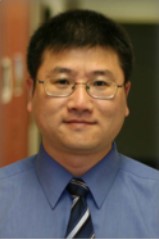Colloquia & Guest Speakers
Nonlinear Integrated Photonics on Thin-Film Lithium Niobate
Qiang Lin, Professor of Electrical and Computer Engineering / Professor of Optics, University of Rochester
Monday, November 10, 2025
3:30 p.m.
Presented in-person in Goergen 101 and on Zoom
Abstract
In recent years, thin-film lithium niobate (TFLN) has been shown as a promising wafer-scale platform for developing multifunctional photonic integrated circuits (PICs) by taking advantage of unique material characteristics of lithium niobate. In this talk, I will present our recent progress in developing nonlinear and quantum photonic functionalities on TFLN PICs.
Lithium niobate (LN) exhibits outstanding electro-optic, nonlinear optical, and piezoelectric properties and has become a workhorse material system for photonics industry and photonic research and development. Photonic integrated circuits (PICs), on the other hand, offer exceptional capability for controlling light flow, light confinement, and light-matter interaction. Combining these excellent properties together into a TFLN PIC platform opens up a great opportunity for realizing novel functionalities beyond the reach of conventional means. I will discuss our recent efforts in developing optical frequency comb, integrated laser, wavelength conversion, and quantum photonics on this platform. I will also give a brief overview of the background, discuss some current challenges and opportunities of the fields, and provide my personal outlook.
Biography

Qiang Lin is a professor of Electrical and Computer Engineering and a professor of Optics at the University of Rochester. His current research focuses primarily on nonlinear nanophotonics, integrated photonic sensing, and integrated quantum photonics. Prior to joining the University of Rochester in 2011, he was a postdoctoral scholar at Caltech from 2007 to 2010. He received his PhD from the Institute of Optics at the University of Rochester in 2006, prior to which he obtained his B.S. and MS in Applied Physics from Tsinghua University, China, in 1996 and 1999, respectively.
